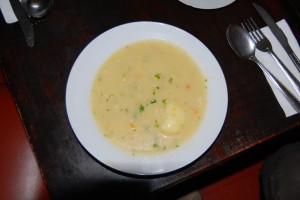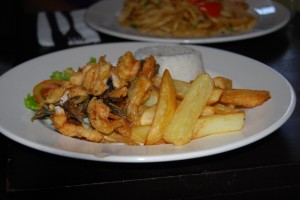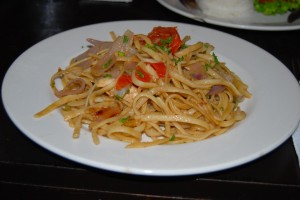Extras or Menu. Huh?

By David Knowlton
Every place has its own local food culture that arose from its past and changes with its present. Though in many places the culture of fast food and chain restaurants is quickly eroding these local ways, in Cuzco the local culture remains strong.
That culture easily gets codified in expressions that can leave outsiders scratching their heads. In Cuzco, this is both a problem and a delight. It is a problem because tourism is the life-blood of its economy and so it must have a food culture that is approachable, while at the same time its peculiarity is part of what draws tourists to come and stay.
One peculiarity confronts every Cuzqueño who works in restaurants almost whenever she or he speaks with outsiders. That is the word “menu”. It simply has a very different meaning here (and in much of highland South America) than it does in the United States or Europe.
For most tourists, “menu” means the page or booklet which contains the foods a restaurant offers that they can study while weighing their appetite and desires to see what they want to eat. Or it means the plan of a meal, the sequence of dishes that will make a dining experience.

Bridging from this latter meaning, the “menu” in Cuzco is a fixed set of dishes, often cooked in bulk, which can be offered for a set, and generally economic, price.

Here it follows a single, standard outline of what a full meal ought to contain. At its simplest, it is a soup, a segundo (or second course) — the main dish, and a desert with a drink to chase it down. This plan can be pared down to either just a soup or a segundo, or it can be ramped up with the addition of other course.
But this is the standard menu in Cuzco — soup, segundo, dessert and drink, as if it were a poem with cadence and rhyme.
Instead of being detailed on a piece of paper or laminated card-stock, the menu is written daily on black boards in the door way of the restaurant, for passersby to see, or it is simply communicated verbally by the hosts to their clients. It changes daily, and sometimes more often, depending on what is available in the markets and what works for the kitchen, as well as what people like to eat.
Just as in Mexico it is fun to sample the different tacos or antojitos (enchiladas, for example) from place to place, in Cuzco it is worth making a round of the city and trying the different menus, whether they cost a single dollar or ten. Along with street-food, that is a great way to get to know the heart and belly of its people.
Menus in this sense probably stem from the early ways in which food was prepared and offered outside the home to people who could not eat at home. There still is in Cuzco a preference for people to eat at home, other than the street food nibbles, but the menu probably arose to fill the need of people who were not able to go home for one reason or another.
And, as a result, it maintains an important restaurant culture that is very different from the metropolitan one where “menu” means the list of possibilities the restaurant can prepare.
This latter sense is carried by the words “lista” (i.e. list) or “carta” (i.e. letter or card), though waiters and barkers learn quickly they mean nothing to tourists. They will try to replace them with the foreign meaning of “menu”. But once this word is pronounced a semantic ambiguity opens that can sink understanding, unless contained by galloping foreign-ness.
The word “extra” is a reciprocal of “menu”. It refers to the dishes other than the set-meal of the menu. Many places that offer menus also offer extras, as do chicherías and picanterías.

While the first focus on chicha, a drink, they also serve food, codified dishes which are extended versions of the segundos of the menu. The picantería picks up the Quechua name for a well seasoned dish, or just a hot sauce, uchukuta, and makes it the name of a place that serves them, although the Spanish word picante — for the spiciness of hot peppers — is used as the base for meaning. Though the word for hot peppers is the root, the food is seldom very spicy at all, unless one takes advantage of the accompanying hot sauces.
Extras then would be translated as side dishes, except in English that phrase refers to plates of a single ingredient, rather than a full dish with its varied components of meat, potatoes, and salads. Each extra is a song with its own meter, its own rhythm, and melody.
Local Cuzco culture is filled with wisdom on where to get the best extras and at what time of the day or night, since street life continues around the clock.

The explosion of restaurants in Cuzco is bringing very different food cultures, from the elite “cocina de autor” where chefs “author” dishes of their own invention, to re-presentations of tradition in new, menu-ed form.
But in any case, Cuzco still maintains its own food culture, even if sometimes it is confusing to both tourists and their guides.




